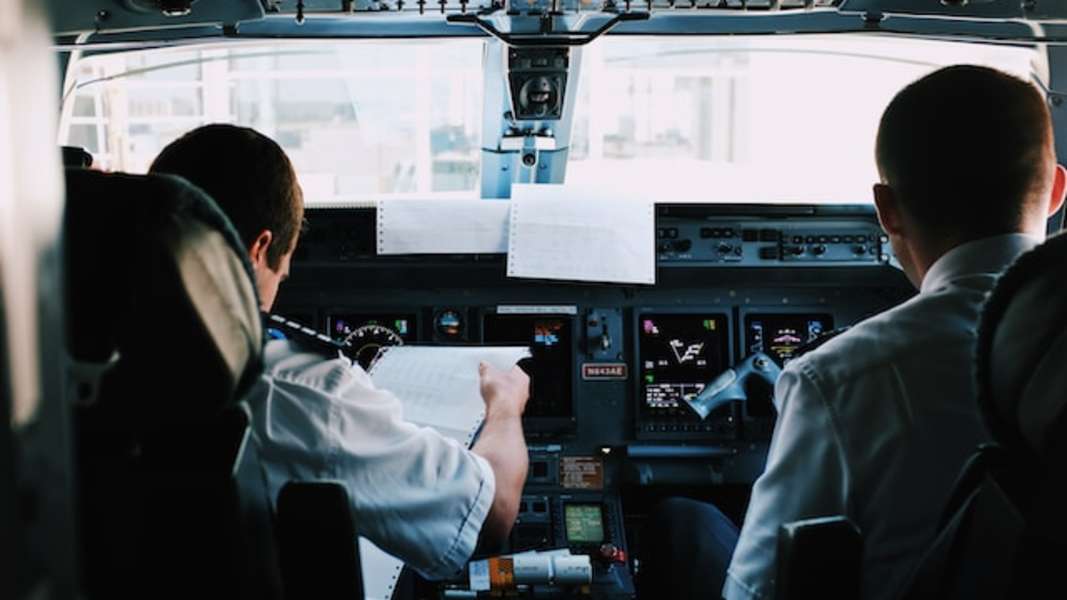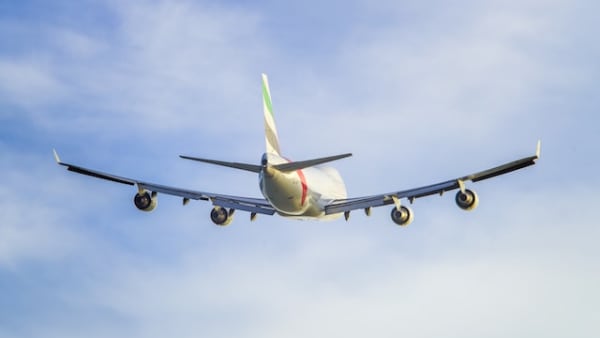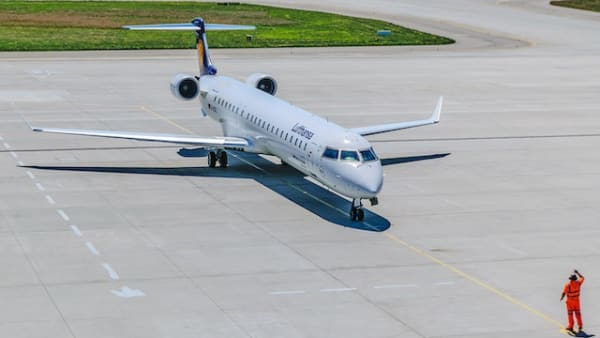Whether you're an experienced pilot or just starting your career in the sky, you'll need to ace your interview with an airline.
To help you prepare, we've compiled a list of the top 20 pilot interview questions, with sample answers to guide you. The list includes both technical and non-technical questions to give you a well-rounded perspective on what to expect during your interview. Additionally, we've included a section on aptitude tests to help you understand their importance in the selection process.
Technical Interview Questions For Pilots
1. What are the four forces acting on an aircraft in flight?
Sample Answer: The four forces acting on an aircraft in flight are lift, weight (gravity), thrust, and drag. Lift is the force that opposes the weight of the aircraft, allowing it to stay in the air. Thrust is generated by the engines and propels the aircraft forward. Drag opposes thrust and acts as a retarding force, slowing the aircraft down. Weight, or gravity, is the force that pulls the aircraft towards the Earth.
2. What is the purpose of flaps and slats?
Sample Answer: Flaps and slats are aerodynamic devices used to alter the shape of an aircraft's wing, providing additional lift and drag during critical phases of flight, such as takeoff and landing. Flaps are located on the trailing edge of the wing, while slats are on the leading edge. By extending these surfaces, the wing's surface area and camber increase, allowing the aircraft to generate more lift at lower speeds.
3. Can you explain the difference between indicated airspeed (IAS), calibrated airspeed (CAS), true airspeed (TAS), and groundspeed (GS)?
Sample Answer: Indicated airspeed (IAS) is the airspeed read directly from the airspeed indicator, which measures the dynamic pressure of the air passing over the aircraft. Calibrated airspeed (CAS) is IAS corrected for instrument and installation errors. True airspeed (TAS) is CAS corrected for altitude and temperature changes, representing the actual speed of the aircraft through the air. Groundspeed (GS) is the speed of the aircraft relative to the ground, which is TAS corrected for wind.
4. What is the difference between AGL and MSL altitude?
Sample Answer: AGL, or Above Ground Level, refers to an altitude measurement taken relative to the ground directly beneath the aircraft. MSL, or Mean Sea Level, is an altitude measurement based on a standardized model of the Earth's atmosphere and is used for navigational purposes. MSL is the altitude typically displayed on an altimeter.
5. What is a stall, and what causes it?
Sample Answer: A stall occurs when an aircraft's wing exceeds its critical angle of attack, causing a sudden loss of lift. This usually happens when the airflow over the wing is disrupted, leading to a separation of the boundary layer. Stalls can be caused by various factors, including high angles of attack, slow airspeeds, and abrupt control inputs.
6. Can you explain the difference between VFR and IFR?
Sample Answer: VFR, or Visual Flight Rules, is a set of regulations that allow pilots to operate an aircraft primarily by visual reference to the ground and other aircraft. IFR, or Instrument Flight Rules, is a set of regulations that require pilots to rely on their aircraft's instruments and navigation systems when flying in conditions with limited visibility, such as in clouds or heavy precipitation.
7. How does a constant-speed propeller work?
Sample Answer: A constant-speed propeller automatically adjusts the blade angle, or pitch, to maintain a constant RPM throughout various flight conditions. This is achieved through a governor, which uses engine oil pressure to change the blade angle according to changes in airspeed or power settings. This system allows the engine to operate at its most efficient RPM, improving overall performance and fuel efficiency.
8. What are the standard temperature and pressure at sea level?
Sample Answer: The standard temperature and pressure at sea level, also known as International Standard Atmosphere (ISA) conditions, are 15 degrees Celsius (59 degrees Fahrenheit) and 29.92 inches of mercury (1013.25 hectopascals).
9. Can you explain the difference between high- and low-pressure weather systems?
Sample Answer: High-pressure systems are characterized by sinking air, which leads to clear skies and generally stable weather conditions. Low-pressure systems, on the other hand, have rising air that cools and condenses, resulting in the formation of clouds and precipitation. Pilots need to be aware of these systems to anticipate potential changes in weather conditions during a flight.
10. What is the significance of the 1-in-60 rule in navigation?
Sample Answer: The 1-in-60 rule is a simple method used by pilots to estimate the correction angle needed to get back on course after a cross-track error. The rule states that for every 60 nautical miles flown, a 1-degree error will result in a one nautical mile cross-track error. This approximation is useful for quick mental calculations during flight planning and navigation.
Non-Technical Interview Questions For Pilots
1. Why did you decide to become a pilot?
Sample Answer: I have always been fascinated by aviation and the freedom of flying. I was inspired by the idea of exploring new places and connecting people across the world. I realized that becoming a pilot would not only allow me to pursue my passion but also provide me with a rewarding and challenging career.
2. How do you handle stress or high-pressure situations?
Sample Answer: In high-pressure situations, I prioritize effective communication and teamwork. I stay focused on the task at hand, ensuring that I maintain situational awareness and make informed decisions. Additionally, I practice stress management techniques, such as deep breathing exercises, to remain calm and composed during challenging situations.
3. Can you describe a time when you faced a difficult situation while flying and how you handled it?
Sample Answer: During a cross-country flight, I encountered unexpected severe turbulence. I immediately informed the passengers about the situation and advised them to fasten their seatbelts. I then focused on maintaining control of the aircraft and coordinating with air traffic control to find a smoother altitude. This experience taught me the importance of staying calm, making quick decisions, and effectively communicating with passengers and crew members.
4. How do you stay current with aviation regulations and industry trends?
Sample Answer: I actively engage with various industry resources, such as aviation publications, online forums, and professional organizations, to stay updated on the latest regulations and trends. Additionally, I participate in training sessions, workshops, and seminars to enhance my knowledge and skills in the field.
5. How do you maintain a healthy work-life balance as a pilot?
Sample Answer: Balancing my professional and personal life is essential to maintain a healthy mindset and prevent burnout. I prioritize effective time management, ensuring that I allocate sufficient time for my family, friends, and personal interests. Additionally, I focus on staying physically and mentally fit through regular exercise and relaxation techniques.
6. Can you describe your experience working in a team environment, and how do you handle conflict within the team?
Sample Answer: During my pilot training, I worked closely with my fellow trainees and instructors, collaborating on various tasks and projects. When conflicts arose, I focused on maintaining open communication and actively listening to all perspectives to find a mutually agreeable solution. I believe that teamwork and effective communication are crucial for ensuring a safe and successful flight operation.
7. What is your greatest strength as a pilot, and how does it benefit you in the cockpit?
Sample Answer: My greatest strength as a pilot is my ability to stay calm and composed under pressure. This trait allows me to maintain situational awareness, make informed decisions, and effectively communicate with my crew and passengers during challenging situations. It also helps me instill confidence in those around me, fostering a positive and supportive working environment.
8. What is your greatest weakness as a pilot, and how have you worked to improve it?
Sample Answer: One of my weaknesses as a pilot was initially managing fatigue during long-haul flights. To address this issue, I developed a strategy for managing my rest periods and sleep schedule more effectively. I also researched and implemented various techniques for maintaining alertness during flight, such as exercise and cognitive stimulation, to ensure I am always performing at my best.
9. How do you handle unexpected changes, such as weather or mechanical issues, during a flight?
Sample Answer: When faced with unexpected changes, I remain adaptable and flexible. I prioritize safety, re-evaluating my flight plan and coordinating with air traffic control and my crew to determine the best course of action. I also ensure that I maintain clear communication with passengers, providing them with accurate information and reassurance during any unforeseen circumstances.
10. Why should we choose you as a pilot for our airline?
Sample Answer: I believe that my strong technical skills, dedication to safety, and commitment to providing exceptional customer service make me an ideal candidate for your airline. My ability to work effectively within a team and adapt to new challenges demonstrates that I am prepared to contribute positively to your organization's success. I am excited about the opportunity to be a part of your team and help maintain your airline's reputation for excellence in the aviation industry.
Using the STAR method to answer pilot interview questions
The STAR method is a widely recognized technique that can help you effectively answer behavioral interview questions during an interview. It provides a structured approach to sharing examples of your past experiences, demonstrating your skills, and showcasing your problem-solving abilities.
STAR stands for S ituation, T ask, A ction, and R esult, and it helps you create a comprehensive and coherent narrative that highlights your accomplishments and suitability for the role you're applying for.
Situation:
When using the STAR method, you begin by describing the Situation or context of the specific experience you're drawing from. This should set the scene and provide enough background information for the interviewer to understand the circumstances.
Task:
Next, explain the Task or the problem you were faced with, detailing your responsibilities and the objectives you needed to achieve.
Action:
After outlining the task, describe the Actions you took to address the problem or complete the task, focusing on the skills you applied and the steps you took to achieve the desired outcome.
Result:
Finally, share the Results or the outcomes of your actions, emphasizing the positive impact your efforts had on the situation and how your performance contributed to the overall success.
Using the STAR method not only helps you organize your thoughts and present your experiences in a clear and concise manner, but it also enables you to highlight the skills and qualities most relevant to the job you're interviewing for.
Aptitude Tests in the Pilot Selection Process
In addition to the interview, aspiring pilots may also be required to complete an aptitude test during the selection process. These tests assess various skills, such as spatial reasoning, problem-solving, and verbal and numerical abilities, which are crucial for the role of a pilot.
These assessments may also include a psychomotor component, testing hand-eye coordination, multitasking abilities, and reaction time.
To prepare for aptitude tests, it is essential to familiarize yourself with the specific tests. Utilize available resources, such as sample tests and practice questions, to hone your skills and improve your performance. By preparing diligently for both the interview and aptitude tests, you can significantly increase your chances of success in the pilot selection process.






